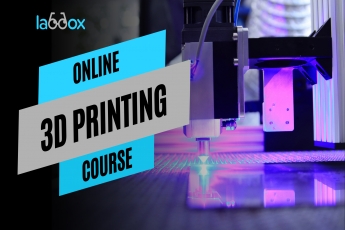
3D Printing has transformed into one of the hottest technologies of the decade. This decade has seen 3D Printing expand its scope to a multitude of domains all over the globe: ranging from the use of 3D Printers by surgeons in super-specialties to rapid prototyping in aeronautics and automation, their use by fashion designers as well as its capabilities to ‘print’ chocolate in bakeries. To be competitive, job seekers should gain hands-on experience in 3D technologies and stay up-to-date on how companies are using 3D Printing. For instance, recent graduate student designers and researchers who are familiar with 3D printing methods have the benefit of knowing how to use the technology within their design process and in supporting its usage within company initiatives.
For Course, Guide click here: https://labdox.news/3D-CourseGuide2

Alexa’s skills are simple Voice Apps for Alexa. Apps that we use in our Android or IOS, in Alexa these are called as the Alexa Skills. It increases Alexa's capabilities and makes it smarter and engaging for users.
It is required in today's time because we are moving towards a voice-first world from a screen first world and voice will become the primary way of getting your things done like controlling your home to getting you out to managing your reminders to almost everything that you do manually or with your computers and laptops. Every brand wants to have its own voice app or the Alexa Skill and hence it's time for us to learn for the voice now.
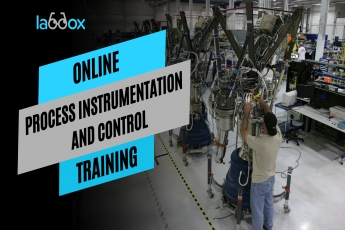
Process Instrumentation & Control online course imparts intelligence on the types of the instrument of pressure, temperature, flow, level, control valves, and their application & selection. The software is a revolution in the world of the technology used in the industries like Refinery, Chemical, Oil & Gas, Bottling Plants, Food Processing. Through this course the candidates would learn about the diagrams and layout, PLC programming, and the reason why the control system is adaptable and universally applied with defined response time. The Process Instrumentation & Control online course throws light on each and every detail of the software that helps the candidates in understanding the details and implement it later in the CAD/CAM industry efficiently.

Industrial Automation is quickly growing particularly within the Electricity industry, Automobile, gas and oil, Manufacturing, Mining etc.. Procedure Automation provides the technologies to control and track the procedure in industrial plants utilizing theories like feedback, cascade, feed-forward and innovative process control. Based on an estimate supplied from the International Society of Automation (ISA), 15,000 new automation engineers are required yearly in the USA.
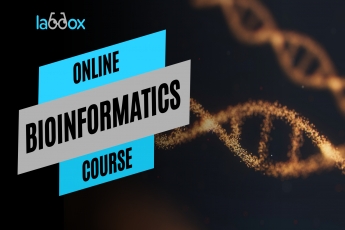
Bioinformatics or computational biology is an interdisciplinary area of science that combines computer science, math, engineering, and data to comprehend and interpret biological data". It's the use of computer technologies to manage biological information.
Bioinformatics is becoming a significant part of several regions of biology. It has a significant part in Biomedical Research.

The analysis of cells is known as cell biology or cellular biology or cytology. Cells contain cytoplasm enclosed within a membrane, which comprises lots of biomolecules such as proteins and nucleic acids. Most animal and plant cells are visible under a microscope, together with measurements between 1 and 100 micrometers.
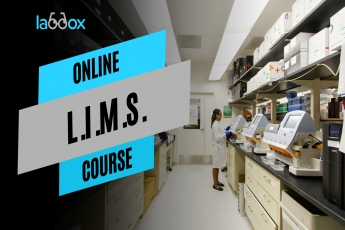
Laboratory Information Management Systems (LIMS) is an online learning program for lab professionals that would like to boost their knowledge of lab information systems and informatics for use in clinical labs. It was developed at a novice level to present the essentials of LIS performance and requirements, and also to fill a void in basic informatics knowledge not obtained in technical laboratory training

What is Job Master Class:
The Masterclass is designed to teach you strategies that can help you bag your dream “10+LPA” job
A three day live session program crafted to enhance your chances to land in an amazing job by impressing recruiters. Job Masterclass is a personalized experience to learn how to ace an interview and leave an unforgettable impression in people's minds.
How to find a Job/Internship in the desired field?
Labdox and Young Engine present an exclusive Job Master Class on tricks and hacks to get your dream job
Number of Students Mentored, trained and helped all across India - more than 12000
Date 19th June - 21st June 2020
Frequently Asked Questions about Job Master Class:
Q.1- Why to take this course?
You will get a proven 10 step process for success in an interview and will prepare for job interviews like an absolute PRO.
Q.2- Is this a certification course?
Yes, a certificate will be provided to the individuals upon the successful completion of course.
Q.3- What's the duration of the Job Master class?
The class will stretch upon 3 days, 2 hours each with an extra one hour of Q&A session on all the days.
Q.4- Would I face some barriers if I ain't fluent in English?
Not a big deal! We are here to learn.
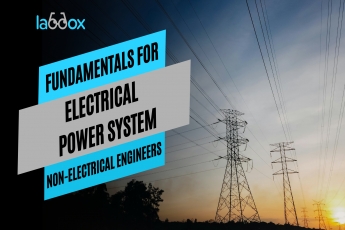
This course will begin with a review of basic electrical circuits and electrical laws. You will learn about the fundamental principles of electrical generation, transmission, and distribution. We will then cover electrical distribution in further detail. Electrical measurements, as applied to single-phase and three-phase systems, will be reviewed.
We will cover earthing (or grounding) with a strong focus on safety issues, before we examine transformers, with an emphasis on power transformers as used in the electrical distribution industry. Power system components in terms of isolators, fuses, and circuit breakers will also be discussed.
The course examines AC and DC motors and reviews electrical lighting and illumination concepts. The impact, especially in the modern world of power electronics, is discussed with a demonstration of the possible unpleasant harmonics that can arise from using this powerful technology.
This then leads to the subject of dealing with power quality.
This course is not designed to make you a professional engineer; however, it can help broaden your perspective on different areas of electrical engineering. It will give you valuable skills in relation to electrical engineering, to help you become more productive and safer in your career, and in working with electrical engineers, technicians, and managers.
.webp)
Depending on the functions performed by a substation, the configuration and complexity can be quite varied. The skill of the designer is to anticipate the present and future needs that the substation will cater to, select appropriate design configuration, and calculate the ratings of main equipment such as busbars, transformers, and switchgear to ensure trouble-free service over several decades.
Sufficient thought should be given to the need for maintaining critical substation equipment, and appropriate redundancies must be planned as well. This is essential as otherwise the consumers fed by the substation can suffer frequent supply outages, which is undesirable from both a service and a financial point of view.
It is also necessary to ensure that the substation will work satisfactorily under various normal and not-so-normal situations (such as short circuits and other types of abnormal events that can occur in a system) without any failures. This is done through various calculations that are performed to reflect a set of simulated conditions. These calculations are collectively called as system studies. The type of studies will depend upon the complexity and criticality of the substation and the loads connected to it. The simulations are carried out using specialized computer software.
A designer should have a clear understanding of the studies that need to be performed in a given case and should also be able to decide the conditions that need to be simulated for each study. System studies can often bring out problem areas in the design. These need to be addressed by appropriate solutions involving equipment for voltage improvement, fault limiters, and flicker compensation.
Modern industries give rise to sizeable harmonic components, which can result in premature equipment failures by heating and or harmonic resonance. Harmonic filters and other measures to inhibit resonance will have to be planned in such cases.
These studies, when performed at the design stage, permit the designer to include the required corrective equipment proactively and integrate them with the rest of the system by providing proper space and switchgear as a part of the substation design, rather than as an afterthought.
This practical course will cover these complex issues through a simple step-by-step approach and real-life examples. At each step, you will undertake a basic design approach and perform calculations to ensure you get practical skills that can be immediately implemented in the workplace.
.png)
Process plants, such as refineries and petrochemical plants, are complex facilities consisting of equipment, piping systems, instruments, electrical systems, electronics, computers, and control systems. The design, engineering, and construction of process plants involve a multidisciplinary team effort.
Process design, plant layout, and design of piping systems constitute a significant part of the engineering effort.
This course provides you with the necessary knowledge and skills in the disciplines of chemical engineering and plant design to facilitate faster learning curves while on the job. Upon completion of this course, you will have a clear understanding of the design and engineering principles used in the design of process plants.
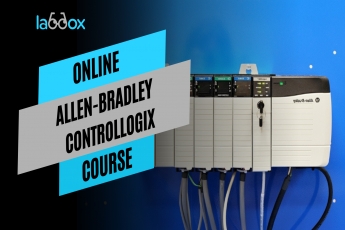
This course concentrates on Rockwell RSLogix5000 and the platforms using this software. It is designed to give you the tools necessary to confidently create and program projects, focussing on design, implementation, and maintenance. It begins with an explanation of the basics of control systems, why we use them, and the various practical aspects of a Rockwell PLC. Different programming techniques, fault finding, and correcting faults are also covered in detail.
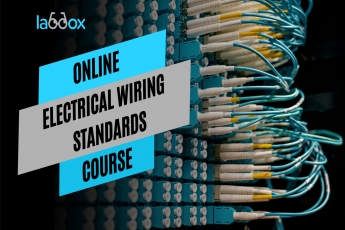
This course covers the requirements laid down in the standard AS/NZS 3000, commonly known as the Australia – New Zealand Wiring Rules. For those installations covered in the scope of this standard, its provisions are mandatory and must be followed. Any engineer involved in the planning and design of electrical systems, their installation, or maintenance, must have a clear idea about the various requirements contained in the standard.
The primary purpose of this standard, like many of its various other equivalent national standards, is to ensure the safety of personnel against the dangers arising from the use and handling of electrical equipment and appliances. The introductory modules of this course outline the basic principles that should be understood for a better appreciation of the standard. These include modules that illustrate the calculation for the power demand of a system and the computation of earth fault currents, as discussed in the appendices of the standard. These are informative and are very important in making an electrical system safe for operation. The actual provisions of the standard are then discussed in detail in the subsequent modules.

These requirements necessitate different forms of relaying apart from the simple current sensing relays. Equipment such as generators, transformers, and motors also need special forms of protection characterized by their design and operating principles.
This course will explain all of these points in detail and provide you with the skills and knowledge necessary to calculate fault currents, and select relays and associated instrument transformers appropriate to each typical system or equipment. You will also learn how to adjust the setting of the relays so that the relays closest to the fault will operate and clear the fault faster than the backup devices.
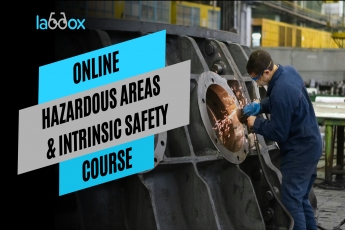
This course provides a comprehensive technical approach to hazardous areas. It offers detailed explanations of the principles involved, the techniques used, the management structures, and the requirements to comply with the harmonized international standards that are now in place. It also explains the subject of explosion protection applied to electrical equipment in such areas.
Where potentially flammable atmospheres are encountered in industrial processes, area classification is mandatory as part of a risk assessment for the management of health and safety. These issues are examined by providing you with the opportunity to apply this process and understand the importance and extent of the cooperation of the disciplines involved.
Requirements of inspection and maintenance are discussed to show the importance of their effectiveness once the correct installation has been adequately achieved, and to enable management to form a structured and effective regime to ensure safety.
While this course is aimed at those who work in technical roles, supervisors and managers are also encouraged to take it, as we outline management responsibility and you to complement and accommodate the needs of your staff.

IEC 61850 is a part of the International Electro-technical Commission (IEC) Technical Committee 57 (TC57) architecture for electric power systems. It is an important international standard for substation automation, and it is having a significant impact on how electric power systems are designed and built for the future.
This program covers core components of IEC 61850 and will provide you with the tools and knowledge to tackle your next substation automation project with confidence. It begins with a review of the fundamentals of substation automation, IEC 61850 elements, and core substation architectures.
The communication interface hardware and standards are then reviewed, along with Ethernet and TCP/IP protocols. A detailed explanation of IEC 61850 is given, where the features, message structure, practical benefits, and applications are discussed.
Furthermore, the program will cover the configuration of IEC 61850 systems, including conformance testing, migration, implementation issues, and recent developments. The content is intended to be product independent, but examples will be taken from existing products to ensure that all aspects of the IEC 61850 protocols are covered.

There is now an increasing need for higher technology methods of obtaining and processing oil and gas as it is a finite declining resource. As a result, the technical challenges of extracting oil and gas are becoming ever more demanding, with an increasing emphasis on more marginal fields and previously inaccessible zones such as deep oceans, Polar regions, Falkland Islands and Greenland.
During this course, we will cover a whole spectrum of activities ranging from basic electrical and instrumentation engineering, through to advanced practice in hazardous areas and data communications.
We will also take an in-depth look at a vast array of electrical and instrumentation equipment used in an oil and gas environment, as well as examples of practical treatment of electrical power systems and instrumentation within the oil, gas, petrochemical, and offshore industries.
While this course will cover the necessary theory, it is used in a practical context, giving you the tools required to ensure that the electrical and instrumentation hardware is delivering the results intended.
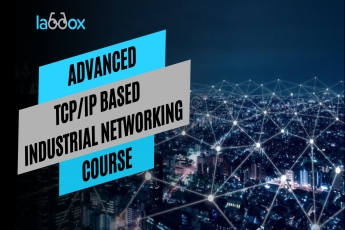
This course deals in depth with the underlying TCP/IP protocols, and specifically addresses both design and configuration issues related to IPv4 and the more recent IPv6.
It also covers the more advanced aspects and applications of Ethernet such as advanced switching and routing, CCTV over IP, Modbus, Industrial Security, Intrinsically Safe applications, switched rings (including the latest IEC 62439-3 redundant ring standard), and highly-deterministic Ethernet-based field buses (e.g., for servo control) capable of 1-millisecond repetition rates and jitter of less than 1 microsecond. It is highly practical, with access to remote laboratories and cutting-edge simulation software, allowing you to achieve hands-on outcomes.

This course is for individuals primarily involved in the design, specification, and implementation of control and measurement equipment. It will help you achieve effective results for industrial processes, by going over new technologies such as smart instrumentation and Fieldbus.
We will cover instrumentation terms, concepts, diagrams, and symbols, as well as an overview of the use of Programmable Logic Controllers (PLCs) in industrial applications. You will also learn about control valve principles and common valve types.
This course will also help you understand how to implement an instrument and wiring number system, and how to integrate a complete system (considering instrumentation and total errors) as well as selection criteria, commissioning and testing.
The course focuses on real applications, with attention to special installation considerations and application limitations when selecting or installing different measurement or control equipment. It will help you appreciate factory and site acceptance testing. You will also learn about reliability centered maintenance and spare parts analysis and considerations for building in-house panels and installations.

There are millions of kilometers of onshore and offshore pipelines spread across the world. However, many personnel involved in pipeline operations do not receive even basic pipeline engineering training, while others are exposed only to specialized areas.
This course will equip you with the core skills in pipeline engineering that will help enhance your career and benefit your organization. We will examine pipeline design, construction, and routing through pipeline economics and advanced practices in asset management.
It doesn’t matter if you are a new mechanical or pipeline technician, technologist, or engineer, or if you are a practicing operations and facilities engineer, you will find this course extremely beneficial.
You will gain an in-depth understanding of the applicable standards and specifications related to pipeline design, operation, and maintenance, as well as grasp the engineering principles involving liquid and gas flow and their importance in relation to pipeline design. The use of key performance indicators will be used to measure the performance of your valuable asset, the pipeline.
With its relevance to both onshore and offshore pipelines, the program equips you with a multidisciplinary understanding of pipelines and enables you to understand the full cycle of pipeline engineering.

This is a practical course in power distribution, focusing on medium voltage (1kV–36kV) power considerations, switchgear, power cables, transformers, power factor correction, earthing, lightning protection, and network studies.
This course will help you understand practical power distribution fundamentals, determine short-circuit ratings quickly and effectively, and assess the influence of fault levers on switchgear ratings.
We will cover how to select the correct type of switchgear for the right application and evaluate the advantages of modern state-of-the-art switchgear protection for your applications, including preventative maintenance information. You will also learn how to identify the different applications for various cable insulation types and how to specify the correct power cable installation methods.
This course will also help you understand when and how to use single-core cables versus three-core cables, as well as how to use and protect power transformers correctly. We will cover ways of assessing and specifying correct grounding and equipment throughout your electrical network and how to determine the need for power factor correction (PFC) for your environment.
On top of this, you will learn how to assess the economic justification for installing PFC equipment, correctly specify PFC equipment and be aware of practical consequences, and confidently use computer simulation software to solve and predict power network problems.
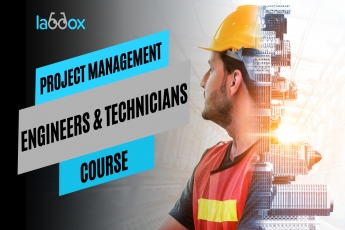
More and more engineering and technical professionals are making career transitions from product design into project management. This, however, requires formal training and a willingness to learn new skills. All the technical knowledge in the world will not deliver a project successfully, with the necessary level of quality, within cost constraints and on time, without proper project management skills.
Unfortunately, very few engineering professionals have any degree of formal project management training, which results in a great deal of personal stress as well as cost blow-outs and other woes.
To address this problem, the course will focus on the critical project-related activities such as work breakdown, scheduling, cost control, and risk management, and show how these can be performed with software to lighten the project manager’s workload.
You will learn how to introduce appropriate quality management procedures, keep your projects on track using the ‘Earned Value Analysis’ method, exercise an appropriate leadership style and keep team members creative and motivated, and avoid the pitfalls caused by a lack of understanding of the legal issues pertaining to projects.
Aspects such as team leadership and contract law are also covered. All topics will be supplemented with practical exercises focusing primarily on the areas of electrical, electronics, instrumentation, and mechanical engineering. If you wish to do so, you can choose, as a basis for the practical exercises, small projects from your work environment.
Course Structure- The course is composed of 12 modules, covering topics such as creating quality project plans, effective work breakdown structures, and computerized PERT and Gantt charts. You will also learn to define appropriate cost reporting mechanisms for your projects, analyze and manage the associated risks, use appropriate software to leverage your time and expertise, and deal with projects that have a significant degree of inherent uncertainty or a strong emphasis on timely completion.
Instructor- John Lawrence is extensively associated with the Diamond and Gold mining industries in Southern Africa, and has over 20 years of experience as a project and departmental manager for a multinational oil company, focusing on designing and managing the infrastructure of the telecommunications, data communications and IT systems.

Construction is the largest industry in the world. Within a civil engineering context, construction may refer to bridges, dams, earthworks, foundations, offshore structures, pipelines, power stations, railways, retaining structures, roads, tunnels, waterways, and water or wastewater infrastructures.
Anything constructed needs to be designed first. Structural engineering deals with the analysis and design aspects required to ensure a safe, functional, and economical end product. During the design process, the designer may regularly interact with specialists, such as architects and operational managers. Once the design is finalized, the implementation requires people to handle aspects such as statutory approvals, planning, quality assurance, and material procurement.
The entire exercise can be undertaken in a highly-coordinated way if everyone understands the terminology or ‘project language.’ To fully understand this language, it is necessary to appreciate the principles of structural analysis and design.
Participants in this course will gain a basic knowledge of structural engineering that includes the principles of analysis of structures and their application, the behavior of materials under loading, the selection of construction materials, and the design fundamentals for reinforced concrete (RCC) and steel structures. The emphasis will be on the determination of the nature and quantum of stress developed under loads and the way structures offer resistance to it. As the most widely used construction materials, RCC and steel will be covered in detail, though masonry and timber are also introduced.

Substations are critical assets in any power system and serve as important nodes in a transmission and distribution network. Substations, therefore, handle multiple voltages in a given location and link two or more systems of different voltages.
This course will focus on subsystems that perform essential functions in substations. These include earthing and grounding, lightning protection of outdoor equipment and substation buildings, power system protection, control, and interlocking equipment, including the auxiliary power sources and various switchyard facilities. These include foundation, structures, cable routing, lighting, fire protection and surveillance equipment.
Earthing of a high voltage switchyard requires careful design as it has a direct bearing on safety. The design approach to switchyards will be discussed, and the basic methods of calculation will be outlined. Lightning is a common threat to substation equipment and supply reliability, as overvoltage surges can result in insulation failure or spark over. While lightning cannot be prevented, its effects can be minimized by proper lightning and surge protection measures.
Any electrical equipment is susceptible to insulation failures. Protection against such failures and the resulting short circuits is a vital need in power systems. The various protection options available to the designer and the protection of busbars, transformers, and substation feeders will be discussed.
Another essential system is the control of switchyard equipment and the required auxiliary power supply. AC auxiliary power is used for the operation of isolators and disconnectors, the operating mechanism of circuit breakers, and substation lighting. The essential functions are powered through DC supply backed with batteries for reliability. This includes control, annunciation and protection functions, breaker close and trip commands, and in some cases, emergency lighting.
A switchyard has to be adequately planned by preparing the site, measuring earth resistivity required for earthing design and optimization, earthwork, foundations, cable trenches inside the switchyard, draining arrangements, etc. These aspects will be covered in detail during the course. We will also discuss gas-insulated switchgear as an alternative to outdoor open type switchyards.
This course will also cover selecting and applying appropriate power system protection to protect equipment and personnel from abnormal system conditions, including short circuits and earth faults.
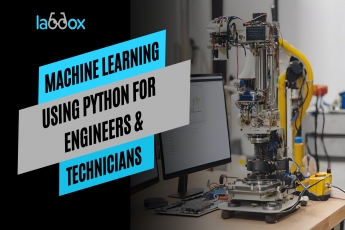
Machine learning is undoubtedly one of the most exciting technologies in recent times. Both large and small companies are embracing it with tremendous results. If you are keen to harness machine learning technologies in your engineering work, become a better problem solver, or are perhaps considering a career in machine learning, then this program is for you.
There are many programs out there, but this one focuses on engineering and industrial applications.
The best way to learn the technologies is to work through practical examples of machine learning in a systematic way. Two types of machine learning will be tackled in this program: supervised learning and unsupervised learning.
Supervised learning is where we learn the relationship of given inputs to a set of outputs. For example, different sensor inputs for a process plant can predict the likelihood of a breakdown of a pump or the requirement for maintenance on an item of equipment. You already know how to classify the earlier input data to previous breakdowns of the pump; so, you want to use new input data to predict this event so that you can act before it actually happens. Algorithms that you will learn about here include linear regression, logistic regression, discriminant analysis, decision trees, Naïve Bayes, support vector machines, and random forests.
Unsupervised learning occurs when there is no pre-defined relationship between input data and an output variable. An example here would be to take sensor data from hundreds of similar industrial plants, then ask the algorithm to find patterns and classify the data. You want your algorithm to find any patterns and do the classification of the data for you. Algorithms that you will learn about here include K-means clustering and Gaussian mixture models.
.webp)
The recent developments & commercialisation of 3D printers has made the topic of 3D modelling & printing very popular.Historically ,it was mainly used for large industrial applications , with companies charging premium rates in getting a rapid prototype out to customers.In the present day , the cost of 3D printers has become affordable to small business & individuals alike.Not only is it being used by hobbyists & general public , but by engineers & design houses to quickly manufacture their own prototypes.You can even manufacture replacement parts fpr hard -to-get items all within a matter of hours , or even minutes. Thus having the skill & the know-how to design & print 3D parts has become crucial for the modern -day engineer or designer.
This practical online course covers core components of 3D design & 3D printing & will provide you with the tools to tackle design projects with confidence.It starts with a review of the fundamentals of 3D printers , their history , types & functions
You will be introduced to Computer Aided Design methodologies ,& guided through the development of 3D modelled parts , assemblies & the general movement clearances & design principles.The course also provides a basic introduction to material properties , design for manufacture & cost optimisation
Finally , you will be given the opportunity to design a basic scale model with movable parts for printing using a 3D printer in our remote laboratory.
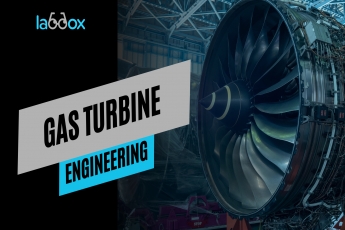
The gas turbine engineering function in any organization encompasses many disciplines touching upon different aspects of gas turbine plant operation and facility management. The advent of new gas turbine designs and applications has transformed this function into one that is becoming highly specialized and increasingly sophisticated. In recent times, there is huge demand for highly skilled, knowledgeable and practically oriented gas turbine engineers. The certificate has been designed and structured keeping this fact in mind.
This course provides a comprehensive overview in the area of gas turbine engineering and is designed to develop your overall skills, boost your career options, and benefit your employer. The numerous practical application tips and short cuts to engineering problem solving are imparted during the course make it highly practical and relevant to your applications and its successful completion will provide a gateway to a fulfilling and intensive yet enjoyable career. Ease of installation, serviceability and operational and design flexibility are critical factors determining the success of any gas turbine installation. In order to identify and select a suitable system for a particular application, it is important that the selection and design related parameters are properly understood. For example, fuel economy is critical in the success of any Gas Turbine operation.
This course places the tried and tested and latest practices and technologies in perspective, while also equipping the participants with the requisite knowledge and skill sets needed to tackle problems related to various systems in a facility. It is presented by an instructor who is a highly experienced engineer from industry, having a mix of both extensive experience and teaching skills. The topics covered are derived from the acclaimed IDC Technologies' courses attended by over 500,000 engineers and technicians during the past 20 years.
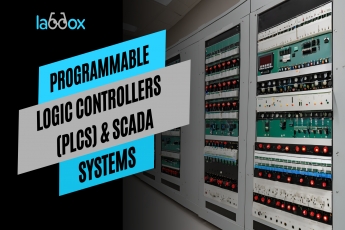
This practical course covers the essentials of SCADA and PLC systems, which are often used in close association with each other. A selection of case studies is used to illustrate the key concepts with examples of real-world working SCADA and PLC systems in the water, electrical, and processing industries.
This is an excellent opportunity to network with your peers, as well as to gain significant new information and techniques for your next SCADA or PLC project. Although our focus is on the generic PLC and uses the open programming IEC 61131-3 standard, it is suitable for people who have little or no exposure to PLCs but who expect to become involved in some or all aspects of PLC installation.
While the course is ideal for electricians, technicians, and engineers who are new to PLCs, much of the material covered will be of value to those who already have some basic skills but need a broader perspective for the larger and more challenging tasks ahead. The information included advances from the basics to challenge even the most experienced engineer in the industry today.
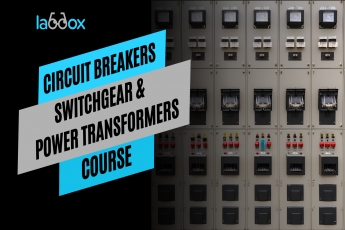
Switchgear, circuit breakers, and transformers are critical components in electrical distribution systems, and their operations significantly affect the overall performance of the system.
The installation of high-voltage distribution and transmission equipment has increased considerably over the years due to the ongoing global demand for power. Their failure can impose extraordinarily high costs on plants, factories, and utilities of all descriptions. It is critical that all personnel operating and working with such equipment have a sound knowledge of their operational requirements and maintenance. Case studies covering the leading manufacturers’ equipment will illustrate important practical principles. Other power system protection components will be discussed as well to ensure that switchgear is understood in the correct context.

We live in a world full of data, and Data👩💻 is now a ubiquitous 6th element. Presently, 2.5 quintillion bytes of data flow every day.
There is a Myth that a career📈 in Data is only for Techies and coders, but if you have an eye for data, enthusiasm to learn new things, and love telling a story with the numbers — then no one can stop you from building your career in Data.
With a CAGR of 30% and the potential of reaching $77.6 billion by 2023 - a career in Data offers a huge opportunity.
If you are someone looking to build your career in Data and learn to design Android Data apps to showcase in your Resume and Social profiles, then Join us in the 2- Days MasterClass on Upskilling with Data Analytics
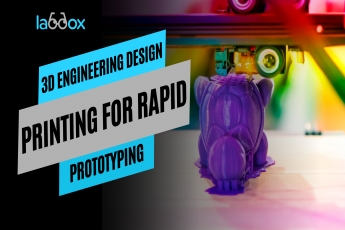
Labdox presents 3 Days MaterClass on 3D Printing For Entrepreneurs to explore Entrepreneurial Opportunities in 3D Printing Technology, the nuances to start, run, and scale Business with three dimensions of Technical, Business, and Digital Aspects.
There is a considerable uptick in Career and Businesses opportunities in Manufacturing | Designing | Consumer Goods| Gifting & Merchandising| Automotive| industries. The adoption of Additive Manufacturing has opened up new frontiers of Career and Business Growth.
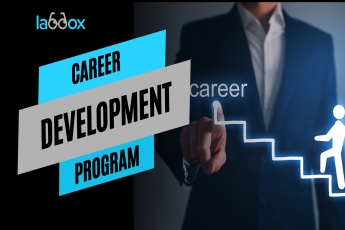
Build your own Career CRM & Management APP | Career Frameworks | Social Playbook | 3 Days | Guide Book | 31 Gems Strategies | Internship Opportunities | Checklists | Live Demos | Free ATS Score | Free Resume Analysis | Discount Coupons worth INR 1500
Covid 19- Pandemic has put over 100 million jobs at stake so it is very crucial to make a perfect career choice that can help you to land the job of your dream.
Labdox presents a Masterclass on "How To Turbo Boost Your Career with 31 Gems" the masterclass helps you to ace up skills that can help you to stay ahead of your peers.
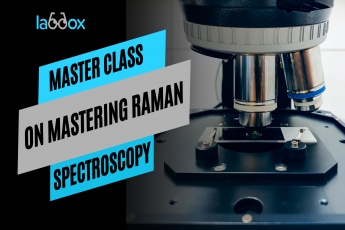
Raman spectroscopy is essential to competitive academic research in many applied scientific disciplines, including materials science, life science research, and chemical and biological engineering. Advances in Raman microscopy and imaging have made the technique accessible to a wide variety of researchers, regardless of expertise or field of study.
Raman spectroscopy is rapidly gathering momentum as a valuable laboratory tool - an interesting development for a technique discovered in 1929. Join us to find out why this growth is happening - what made it possible - and to learn how to navigate the process of configuring your Raman system and then obtaining meaningful results.
Raman spectroscopy is essential to competitive academic research in many applied scientific disciplines like:
Pharmaceuticals
Forensic Department
Gems & Mineral Industry
Diagnostics
Food Industry
Plastics & Polymers
Nanotechnology.
Click here to check details of the course -
https://link.labdox.online/emergence
This course will cover three main topics to cover our vision of
| Accessibility to the skies , Autonomy in the Ground and World Sustainability |
that is electric mobility, drones and Autonomous Cars. In this course you will be learning the following topics:-
ELECTRIC MOBILITY
1- Transportation in the 21st Centaury
2- Electric Cars and Electric Mobility
Key outcomes: Understanding Electric Mobility Technology, infrastructure and Challenges.
Drones and Autonomous Systems
1- Drone UAV and Simulation in the 21st Centaury.
2- Unmanned Aerial Vehicles Software, Simulation and Control
Key outcomes: The ability to build a DIY drone and control a drone in a simulation. In addition to more advanced topics of planning, estimation and control swarms of drones.
Autonomous Cars
1- Introduction to Autonomous Cars
2- State Estimation, Localization and Visual Perception of Autonomous Vehicles.
3- Motion Planning of Autonomous Cars.
4- Applications for Autonomous Cars .
Key outcomes: In-depth knowledge of Autonomous Cars, the ability to build the full software stack of autonomous vehicles, this includes the controller, the visual perception stack as well the motion planning stack.
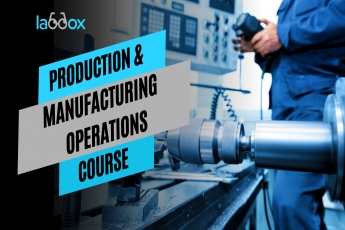
In the dynamic field of production and manufacturing operations, understanding the intricacies of modern production processes is crucial for professionals across industries. This comprehensive course delves into the core principles of production and manufacturing, providing insights into the latest technologies and strategies employed by successful organizations. Participants will gain practical knowledge applicable to a variety of sectors, from optimizing manufacturing processes to enhancing overall operational efficiency.
Click here to check details of the course -
https://link.labdox.online/emergence
This course will cover three main topics to cover our vision of
| Accessibility to the skies , Autonomy in the Ground and World Sustainability |
that is electric mobility, drones and Autonomous Cars. In this course you will be learning the following topics:-
ELECTRIC MOBILITY
1- Transportation in the 21st Centaury
2- Electric Cars and Electric Mobility
Key outcomes: Understanding Electric Mobility Technology, infrastructure and Challenges.
Drones and Autonomous Systems
1- Drone UAV and Simulation in the 21st Centaury.
2- Unmanned Aerial Vehicles Software, Simulation and Control
Key outcomes: The ability to build a DIY drone and control a drone in a simulation. In addition to more advanced topics of planning, estimation and control swarms of drones.
Autonomous Cars
1- Introduction to Autonomous Cars
2- State Estimation, Localization and Visual Perception of Autonomous Vehicles.
3- Motion Planning of Autonomous Cars.
4- Applications for Autonomous Cars .
Key outcomes: In-depth knowledge of Autonomous Cars, the ability to build the full software stack of autonomous vehicles, this includes the controller, the visual perception stack as well the motion planning stack.

In the dynamic field of production and manufacturing operations, understanding the intricacies of modern production processes is crucial for professionals across industries. This comprehensive course delves into the core principles of production and manufacturing, providing insights into the latest technologies and strategies employed by successful organizations. Participants will gain practical knowledge applicable to a variety of sectors, from optimizing manufacturing processes to enhancing overall operational efficiency.

In the dynamic field of production and manufacturing operations, understanding the intricacies of modern production processes is crucial for professionals across industries. This comprehensive course delves into the core principles of production and manufacturing, providing insights into the latest technologies and strategies employed by successful organizations. Participants will gain practical knowledge applicable to a variety of sectors, from optimizing manufacturing processes to enhancing overall operational efficiency.
Click here to check details of the course -
https://link.labdox.online/emergence
This course will cover three main topics to cover our vision of
| Accessibility to the skies , Autonomy in the Ground and World Sustainability |
that is electric mobility, drones and Autonomous Cars. In this course you will be learning the following topics:-
ELECTRIC MOBILITY
1- Transportation in the 21st Centaury
2- Electric Cars and Electric Mobility
Key outcomes: Understanding Electric Mobility Technology, infrastructure and Challenges.
Drones and Autonomous Systems
1- Drone UAV and Simulation in the 21st Centaury.
2- Unmanned Aerial Vehicles Software, Simulation and Control
Key outcomes: The ability to build a DIY drone and control a drone in a simulation. In addition to more advanced topics of planning, estimation and control swarms of drones.
Autonomous Cars
1- Introduction to Autonomous Cars
2- State Estimation, Localization and Visual Perception of Autonomous Vehicles.
3- Motion Planning of Autonomous Cars.
4- Applications for Autonomous Cars .
Key outcomes: In-depth knowledge of Autonomous Cars, the ability to build the full software stack of autonomous vehicles, this includes the controller, the visual perception stack as well the motion planning stack.

Raman spectroscopy is essential to competitive academic research in many applied scientific disciplines, including materials science, life science research, and chemical and biological engineering. Advances in Raman microscopy and imaging have made the technique accessible to a wide variety of researchers, regardless of expertise or field of study.
Raman spectroscopy is rapidly gathering momentum as a valuable laboratory tool - an interesting development for a technique discovered in 1929. Join us to find out why this growth is happening - what made it possible - and to learn how to navigate the process of configuring your Raman system and then obtaining meaningful results.
Raman spectroscopy is essential to competitive academic research in many applied scientific disciplines like:
Pharmaceuticals
Forensic Department
Gems & Mineral Industry
Diagnostics
Food Industry
Plastics & Polymers
Nanotechnology.

Build your own Career CRM & Management APP | Career Frameworks | Social Playbook | 3 Days | Guide Book | 31 Gems Strategies | Internship Opportunities | Checklists | Live Demos | Free ATS Score | Free Resume Analysis | Discount Coupons worth INR 1500
Covid 19- Pandemic has put over 100 million jobs at stake so it is very crucial to make a perfect career choice that can help you to land the job of your dream.
Labdox presents a Masterclass on "How To Turbo Boost Your Career with 31 Gems" the masterclass helps you to ace up skills that can help you to stay ahead of your peers.

3D Printing has transformed into one of the hottest technologies of the decade. This decade has seen 3D Printing expand its scope to a multitude of domains all over the globe: ranging from the use of 3D Printers by surgeons in super-specialties to rapid prototyping in aeronautics and automation, their use by fashion designers as well as its capabilities to ‘print’ chocolate in bakeries. To be competitive, job seekers should gain hands-on experience in 3D technologies and stay up-to-date on how companies are using 3D Printing. For instance, recent graduate student designers and researchers who are familiar with 3D printing methods have the benefit of knowing how to use the technology within their design process and in supporting its usage within company initiatives.
For Course, Guide click here: https://labdox.news/3D-CourseGuide2

Alexa’s skills are simple Voice Apps for Alexa. Apps that we use in our Android or IOS, in Alexa these are called as the Alexa Skills. It increases Alexa's capabilities and makes it smarter and engaging for users.
It is required in today's time because we are moving towards a voice-first world from a screen first world and voice will become the primary way of getting your things done like controlling your home to getting you out to managing your reminders to almost everything that you do manually or with your computers and laptops. Every brand wants to have its own voice app or the Alexa Skill and hence it's time for us to learn for the voice now.

The analysis of cells is known as cell biology or cellular biology or cytology. Cells contain cytoplasm enclosed within a membrane, which comprises lots of biomolecules such as proteins and nucleic acids. Most animal and plant cells are visible under a microscope, together with measurements between 1 and 100 micrometers.

Laboratory Information Management Systems (LIMS) is an online learning program for lab professionals that would like to boost their knowledge of lab information systems and informatics for use in clinical labs. It was developed at a novice level to present the essentials of LIS performance and requirements, and also to fill a void in basic informatics knowledge not obtained in technical laboratory training

What is Job Master Class:
The Masterclass is designed to teach you strategies that can help you bag your dream “10+LPA” job
A three day live session program crafted to enhance your chances to land in an amazing job by impressing recruiters. Job Masterclass is a personalized experience to learn how to ace an interview and leave an unforgettable impression in people's minds.
How to find a Job/Internship in the desired field?
Labdox and Young Engine present an exclusive Job Master Class on tricks and hacks to get your dream job
Number of Students Mentored, trained and helped all across India - more than 12000
Date 19th June - 21st June 2020
Frequently Asked Questions about Job Master Class:
Q.1- Why to take this course?
You will get a proven 10 step process for success in an interview and will prepare for job interviews like an absolute PRO.
Q.2- Is this a certification course?
Yes, a certificate will be provided to the individuals upon the successful completion of course.
Q.3- What's the duration of the Job Master class?
The class will stretch upon 3 days, 2 hours each with an extra one hour of Q&A session on all the days.
Q.4- Would I face some barriers if I ain't fluent in English?
Not a big deal! We are here to learn.
.webp)
Depending on the functions performed by a substation, the configuration and complexity can be quite varied. The skill of the designer is to anticipate the present and future needs that the substation will cater to, select appropriate design configuration, and calculate the ratings of main equipment such as busbars, transformers, and switchgear to ensure trouble-free service over several decades.
Sufficient thought should be given to the need for maintaining critical substation equipment, and appropriate redundancies must be planned as well. This is essential as otherwise the consumers fed by the substation can suffer frequent supply outages, which is undesirable from both a service and a financial point of view.
It is also necessary to ensure that the substation will work satisfactorily under various normal and not-so-normal situations (such as short circuits and other types of abnormal events that can occur in a system) without any failures. This is done through various calculations that are performed to reflect a set of simulated conditions. These calculations are collectively called as system studies. The type of studies will depend upon the complexity and criticality of the substation and the loads connected to it. The simulations are carried out using specialized computer software.
A designer should have a clear understanding of the studies that need to be performed in a given case and should also be able to decide the conditions that need to be simulated for each study. System studies can often bring out problem areas in the design. These need to be addressed by appropriate solutions involving equipment for voltage improvement, fault limiters, and flicker compensation.
Modern industries give rise to sizeable harmonic components, which can result in premature equipment failures by heating and or harmonic resonance. Harmonic filters and other measures to inhibit resonance will have to be planned in such cases.
These studies, when performed at the design stage, permit the designer to include the required corrective equipment proactively and integrate them with the rest of the system by providing proper space and switchgear as a part of the substation design, rather than as an afterthought.
This practical course will cover these complex issues through a simple step-by-step approach and real-life examples. At each step, you will undertake a basic design approach and perform calculations to ensure you get practical skills that can be immediately implemented in the workplace.
.png)
Process plants, such as refineries and petrochemical plants, are complex facilities consisting of equipment, piping systems, instruments, electrical systems, electronics, computers, and control systems. The design, engineering, and construction of process plants involve a multidisciplinary team effort.
Process design, plant layout, and design of piping systems constitute a significant part of the engineering effort.
This course provides you with the necessary knowledge and skills in the disciplines of chemical engineering and plant design to facilitate faster learning curves while on the job. Upon completion of this course, you will have a clear understanding of the design and engineering principles used in the design of process plants.

This course concentrates on Rockwell RSLogix5000 and the platforms using this software. It is designed to give you the tools necessary to confidently create and program projects, focussing on design, implementation, and maintenance. It begins with an explanation of the basics of control systems, why we use them, and the various practical aspects of a Rockwell PLC. Different programming techniques, fault finding, and correcting faults are also covered in detail.

IEC 61850 is a part of the International Electro-technical Commission (IEC) Technical Committee 57 (TC57) architecture for electric power systems. It is an important international standard for substation automation, and it is having a significant impact on how electric power systems are designed and built for the future.
This program covers core components of IEC 61850 and will provide you with the tools and knowledge to tackle your next substation automation project with confidence. It begins with a review of the fundamentals of substation automation, IEC 61850 elements, and core substation architectures.
The communication interface hardware and standards are then reviewed, along with Ethernet and TCP/IP protocols. A detailed explanation of IEC 61850 is given, where the features, message structure, practical benefits, and applications are discussed.
Furthermore, the program will cover the configuration of IEC 61850 systems, including conformance testing, migration, implementation issues, and recent developments. The content is intended to be product independent, but examples will be taken from existing products to ensure that all aspects of the IEC 61850 protocols are covered.

This course deals in depth with the underlying TCP/IP protocols, and specifically addresses both design and configuration issues related to IPv4 and the more recent IPv6.
It also covers the more advanced aspects and applications of Ethernet such as advanced switching and routing, CCTV over IP, Modbus, Industrial Security, Intrinsically Safe applications, switched rings (including the latest IEC 62439-3 redundant ring standard), and highly-deterministic Ethernet-based field buses (e.g., for servo control) capable of 1-millisecond repetition rates and jitter of less than 1 microsecond. It is highly practical, with access to remote laboratories and cutting-edge simulation software, allowing you to achieve hands-on outcomes.

Construction is the largest industry in the world. Within a civil engineering context, construction may refer to bridges, dams, earthworks, foundations, offshore structures, pipelines, power stations, railways, retaining structures, roads, tunnels, waterways, and water or wastewater infrastructures.
Anything constructed needs to be designed first. Structural engineering deals with the analysis and design aspects required to ensure a safe, functional, and economical end product. During the design process, the designer may regularly interact with specialists, such as architects and operational managers. Once the design is finalized, the implementation requires people to handle aspects such as statutory approvals, planning, quality assurance, and material procurement.
The entire exercise can be undertaken in a highly-coordinated way if everyone understands the terminology or ‘project language.’ To fully understand this language, it is necessary to appreciate the principles of structural analysis and design.
Participants in this course will gain a basic knowledge of structural engineering that includes the principles of analysis of structures and their application, the behavior of materials under loading, the selection of construction materials, and the design fundamentals for reinforced concrete (RCC) and steel structures. The emphasis will be on the determination of the nature and quantum of stress developed under loads and the way structures offer resistance to it. As the most widely used construction materials, RCC and steel will be covered in detail, though masonry and timber are also introduced.

Substations are critical assets in any power system and serve as important nodes in a transmission and distribution network. Substations, therefore, handle multiple voltages in a given location and link two or more systems of different voltages.
This course will focus on subsystems that perform essential functions in substations. These include earthing and grounding, lightning protection of outdoor equipment and substation buildings, power system protection, control, and interlocking equipment, including the auxiliary power sources and various switchyard facilities. These include foundation, structures, cable routing, lighting, fire protection and surveillance equipment.
Earthing of a high voltage switchyard requires careful design as it has a direct bearing on safety. The design approach to switchyards will be discussed, and the basic methods of calculation will be outlined. Lightning is a common threat to substation equipment and supply reliability, as overvoltage surges can result in insulation failure or spark over. While lightning cannot be prevented, its effects can be minimized by proper lightning and surge protection measures.
Any electrical equipment is susceptible to insulation failures. Protection against such failures and the resulting short circuits is a vital need in power systems. The various protection options available to the designer and the protection of busbars, transformers, and substation feeders will be discussed.
Another essential system is the control of switchyard equipment and the required auxiliary power supply. AC auxiliary power is used for the operation of isolators and disconnectors, the operating mechanism of circuit breakers, and substation lighting. The essential functions are powered through DC supply backed with batteries for reliability. This includes control, annunciation and protection functions, breaker close and trip commands, and in some cases, emergency lighting.
A switchyard has to be adequately planned by preparing the site, measuring earth resistivity required for earthing design and optimization, earthwork, foundations, cable trenches inside the switchyard, draining arrangements, etc. These aspects will be covered in detail during the course. We will also discuss gas-insulated switchgear as an alternative to outdoor open type switchyards.
This course will also cover selecting and applying appropriate power system protection to protect equipment and personnel from abnormal system conditions, including short circuits and earth faults.

Machine learning is undoubtedly one of the most exciting technologies in recent times. Both large and small companies are embracing it with tremendous results. If you are keen to harness machine learning technologies in your engineering work, become a better problem solver, or are perhaps considering a career in machine learning, then this program is for you.
There are many programs out there, but this one focuses on engineering and industrial applications.
The best way to learn the technologies is to work through practical examples of machine learning in a systematic way. Two types of machine learning will be tackled in this program: supervised learning and unsupervised learning.
Supervised learning is where we learn the relationship of given inputs to a set of outputs. For example, different sensor inputs for a process plant can predict the likelihood of a breakdown of a pump or the requirement for maintenance on an item of equipment. You already know how to classify the earlier input data to previous breakdowns of the pump; so, you want to use new input data to predict this event so that you can act before it actually happens. Algorithms that you will learn about here include linear regression, logistic regression, discriminant analysis, decision trees, Naïve Bayes, support vector machines, and random forests.
Unsupervised learning occurs when there is no pre-defined relationship between input data and an output variable. An example here would be to take sensor data from hundreds of similar industrial plants, then ask the algorithm to find patterns and classify the data. You want your algorithm to find any patterns and do the classification of the data for you. Algorithms that you will learn about here include K-means clustering and Gaussian mixture models.
.webp)
The recent developments & commercialisation of 3D printers has made the topic of 3D modelling & printing very popular.Historically ,it was mainly used for large industrial applications , with companies charging premium rates in getting a rapid prototype out to customers.In the present day , the cost of 3D printers has become affordable to small business & individuals alike.Not only is it being used by hobbyists & general public , but by engineers & design houses to quickly manufacture their own prototypes.You can even manufacture replacement parts fpr hard -to-get items all within a matter of hours , or even minutes. Thus having the skill & the know-how to design & print 3D parts has become crucial for the modern -day engineer or designer.
This practical online course covers core components of 3D design & 3D printing & will provide you with the tools to tackle design projects with confidence.It starts with a review of the fundamentals of 3D printers , their history , types & functions
You will be introduced to Computer Aided Design methodologies ,& guided through the development of 3D modelled parts , assemblies & the general movement clearances & design principles.The course also provides a basic introduction to material properties , design for manufacture & cost optimisation
Finally , you will be given the opportunity to design a basic scale model with movable parts for printing using a 3D printer in our remote laboratory.

This practical course covers the essentials of SCADA and PLC systems, which are often used in close association with each other. A selection of case studies is used to illustrate the key concepts with examples of real-world working SCADA and PLC systems in the water, electrical, and processing industries.
This is an excellent opportunity to network with your peers, as well as to gain significant new information and techniques for your next SCADA or PLC project. Although our focus is on the generic PLC and uses the open programming IEC 61131-3 standard, it is suitable for people who have little or no exposure to PLCs but who expect to become involved in some or all aspects of PLC installation.
While the course is ideal for electricians, technicians, and engineers who are new to PLCs, much of the material covered will be of value to those who already have some basic skills but need a broader perspective for the larger and more challenging tasks ahead. The information included advances from the basics to challenge even the most experienced engineer in the industry today.

Switchgear, circuit breakers, and transformers are critical components in electrical distribution systems, and their operations significantly affect the overall performance of the system.
The installation of high-voltage distribution and transmission equipment has increased considerably over the years due to the ongoing global demand for power. Their failure can impose extraordinarily high costs on plants, factories, and utilities of all descriptions. It is critical that all personnel operating and working with such equipment have a sound knowledge of their operational requirements and maintenance. Case studies covering the leading manufacturers’ equipment will illustrate important practical principles. Other power system protection components will be discussed as well to ensure that switchgear is understood in the correct context.

Raman spectroscopy is essential to competitive academic research in many applied scientific disciplines, including materials science, life science research, and chemical and biological engineering. Advances in Raman microscopy and imaging have made the technique accessible to a wide variety of researchers, regardless of expertise or field of study.
Raman spectroscopy is rapidly gathering momentum as a valuable laboratory tool - an interesting development for a technique discovered in 1929. Join us to find out why this growth is happening - what made it possible - and to learn how to navigate the process of configuring your Raman system and then obtaining meaningful results.
Raman spectroscopy is essential to competitive academic research in many applied scientific disciplines like:
Pharmaceuticals
Forensic Department
Gems & Mineral Industry
Diagnostics
Food Industry
Plastics & Polymers
Nanotechnology.
Click here to check details of the course -
https://link.labdox.online/emergence
This course will cover three main topics to cover our vision of
| Accessibility to the skies , Autonomy in the Ground and World Sustainability |
that is electric mobility, drones and Autonomous Cars. In this course you will be learning the following topics:-
ELECTRIC MOBILITY
1- Transportation in the 21st Centaury
2- Electric Cars and Electric Mobility
Key outcomes: Understanding Electric Mobility Technology, infrastructure and Challenges.
Drones and Autonomous Systems
1- Drone UAV and Simulation in the 21st Centaury.
2- Unmanned Aerial Vehicles Software, Simulation and Control
Key outcomes: The ability to build a DIY drone and control a drone in a simulation. In addition to more advanced topics of planning, estimation and control swarms of drones.
Autonomous Cars
1- Introduction to Autonomous Cars
2- State Estimation, Localization and Visual Perception of Autonomous Vehicles.
3- Motion Planning of Autonomous Cars.
4- Applications for Autonomous Cars .
Key outcomes: In-depth knowledge of Autonomous Cars, the ability to build the full software stack of autonomous vehicles, this includes the controller, the visual perception stack as well the motion planning stack.

In the dynamic field of production and manufacturing operations, understanding the intricacies of modern production processes is crucial for professionals across industries. This comprehensive course delves into the core principles of production and manufacturing, providing insights into the latest technologies and strategies employed by successful organizations. Participants will gain practical knowledge applicable to a variety of sectors, from optimizing manufacturing processes to enhancing overall operational efficiency.
Create projects you�re proud to share. Classes include prompts and resources.

Share and collaborate with a growing community.

Unlock styles and strategies today's creators need to know.